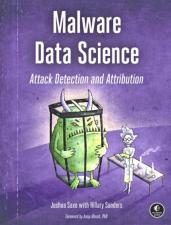Introduction
Chapter 1: Basic Static Malware Analysis
Chapter 2: Beyond Basic Static Analysis: x86 Disassembly
Chapter 3: A Brief Introduction to Dynamic Analysis
Chapter 4: Identifying Attack Campaigns Using Malware Networks
Chapter 5: Shared Code Analysis
Chapter 6: Understanding Machine Learning-Based Malware Detectors
Chapter 7: Evaluating Malware Detection Systems
Chapter 8: Building Machine Learning Detectors
Chapter 9: Visualizing Malware Trends
Chapter 10: Deep Learning Basics
Chapter 11: Building a Neural Network Malware Detector with Keras
Chapter 12: Becoming a Data Scientist
Appendix: An Overview of Datasets and Tools
View the detailed Table of Contents
View the Index



